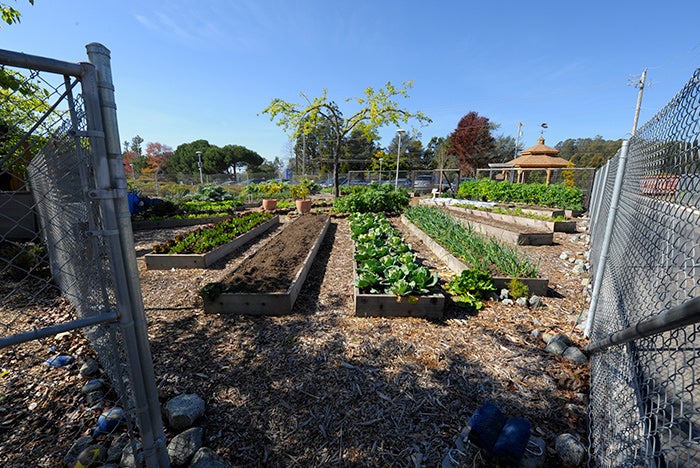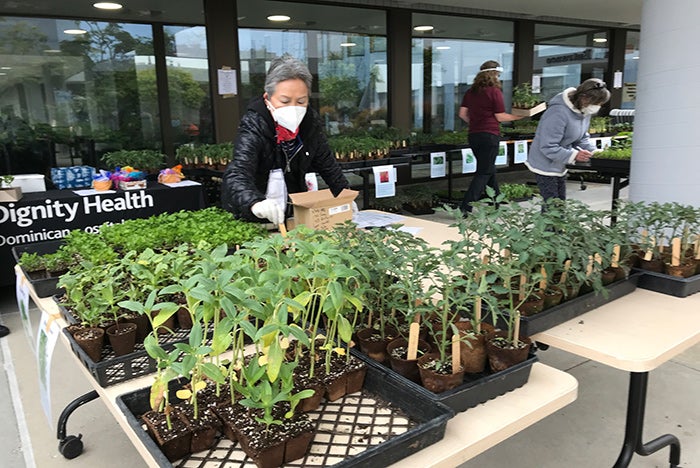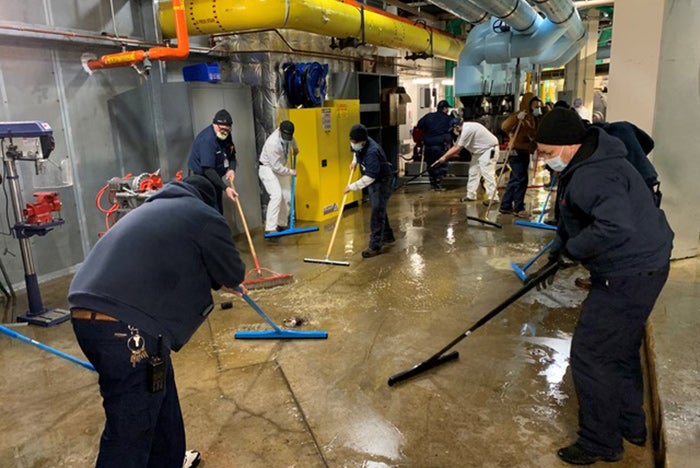Environmental equity and the role of health care facilities
Editor’s note: This article is the first in a series on the impacts of climate change and climate events on health care facilities and the planning, preparedness and response efforts of health care organizations.
Devastating wildfires, deadly hurricanes, extreme heat, unprecedented ice storms, destructive flooding, crippling droughts. While such natural disasters are not new occurrences, the effects of climate change have exacerbated their impacts. The likelihood of more frequent and severe events means planning, preparation and recovery needs will only increase in the future.
Climate change poses particular challenges to health care facilities, which are often anchor institutions in their communities, providing essential services both in the short-term — after a disaster, for example — and over the long-term in terms of public health. The role and critical nature of health care facilities mean that they have significant impacts on communities, regions and beyond.
“The choices we make inside our organizations, especially around things like energy efficiency, have health impacts and they have environmental impacts. They’re not separate,” says Sarah O’Keeffe, director of sustainability at MetroHealth System in Cleveland. “These decisions affect the natural system in which we all live. I build a building so that I’m not exposed to the elements. But the materials and methods that I use to build that building have an impact on future weather patterns. That’s a circularity that we need to recognize.”
These impacts, however, do not affect communities in the same ways. Vulnerable populations suffer the effects of climate change because of factors such as level of exposure, access to resources and the social determinants of health that influence health risks and outcomes. Low-income communities, communities of color, children and older adults, immigrant groups and people with disabilities are all populations that are less able to contend with the human health consequences of climate change.

The CommonSpirit Health garden puts the focus on health and wellness.
Image courtesy of CommonSpirit Health
G. Andy Woommavovah, CHFM, system director of energy and infrastructure at CommonSpirit Health, which is headquartered in Chicago, says health care facilities managers can contribute to environmental equity through their work in a multitude of ways. He encourages them to understand how their facilities are managing direct and indirect emissions, to measure energy performance and set goals, and to implement conservation measures.
“We’re going to have to start really understanding the environmental impacts we are creating — as facility directors, as managers, as system leaders who are procuring and using energy,” Woommavovah says. “We’re having to ask different questions now about how the energy sold to us is being produced. Is it coming from a renewable source? It starts to grow outside of the facilities group to how an organization is going to take the lead in doing something about emissions.”
The intersection of environmental equity and health equity has long been clear for MetroHealth. “Our patient population tends to be the most vulnerable of the vulnerable,” O’Keeffe says. “We’ve really emphasized the health and wellness side of patient care through community partnerships and addressing the social determinants of health. Instead of treating patients when they’re so sick that they use the emergency room or they are acute and have to come to the hospital, we’re focusing on the prevention side.”
Reaching into the community
O’Keeffe says the polar vortex during the winter of 2014 was the start of a major reenvisioning of the MetroHealth System’s main campus. The cold weather had caused pipes to freeze with subsequent flooding in the inpatient building. While the facility did not have to shut down, the severe impact on operations highlighted aging infrastructure issues.
The planning for a major campus transformation started the following year. This $1 billion project includes a new inpatient tower and central utility plant that together will be 50% more efficient than the current hospital. In addition, the reconfigured footprint of the new outpatient tower will allow for roughly 25 acres of much-needed green space, including a 12-acre community park on the main campus.
“The planned park will be along one of the busiest transit corridors in Cleveland, a major north-south artery connecting downtown Cleveland and a lot of communities,” O’Keeffe notes. “A big part of the already completed planning involved engaging with community members so we really physically change how we interact with the surrounding neighborhoods.”
MetroHealth took the lead in establishing a groundbreaking hospital-anchored EcoDistrict, centered in Cleveland’s Clark-Fulton neighborhood, to ensure public policy and investment decisions are based on equity, resilience and climate protection principles. It has also worked with other organizations focused on climate change, sustainability, public health and health care, including the Healthcare Anchor Network, Practice Greenhealth and Health Care Without Harm.
Kaiser Permanente also sees its roles and responsibilities extending out into the communities in the eight states and the District of Columbia where its facilities are located. Sonoma County in Northern California has been hit hard by wildfires in recent years, and the Kaiser Permanente Santa Rosa facility has evacuated twice. Kaiser Permanente’s preparedness and recovery efforts in the region are addressing the economic security, physical and mental health, housing and homeless, and community infrastructure needs of vulnerable populations.
“We are a community anchor in many cases, but we look beyond that as a community benefit organization,” says Skip Skivington, vice president of healthcare continuity and support services at Kaiser Permanente. “For example, we’ve been targeting the agricultural community in California to make sure that emergency communications are translated into other languages and to provide mental health services to people who were impacted by fires. We look past our own self-interest to the broader community and how we can best serve them.”
CommonSpirit Health, which has facilities in 21 states, has also taken steps to address climate change and environmental equity. “Health care systems must start now in assessing the true impact of their operations and set the example by taking actions to permanently reduce our carbon emissions,” Woommavovah says. “At CommonSpirit Health, we can impact community benefits by developing key infrastructure to enable and accelerate our population health capabilities, sponsoring recycling programs and community vegetable gardens, measurably improving health and promoting health equity.”

CommonSpirit Health hosts an Earth Day plant sale.
Image courtesy of CommonSpirit Health
Climate ambassadors, trained through a partnership with ecoAmerica, help highlight the importance of sustainability and climate change issues.
“Physicians and nurses learn about how to talk about climate and how can they use their trusted voices,” says Sister Mary Ellen Leciejewski, system vice president of environmental sustainability at CommonSpirit Health. “About 200 people, not only clinicians, signed up for the workshop. We talked about climate change but also about activities we’re already doing in our hospital system, how they’re connected to climate and what else we can do.”
CommonSpirit Health is actively pursuing climate action planning and setting carbon reduction goals with a recently announced plan to achieve net-zero greenhouse gas emissions by 2040. In addition, it is participating in a number of collaborative efforts to address climate change, including the Health Care Without Harm Health Care Climate Challenge and the Race to Zero campaign being led by the United Nations Framework Convention on Climate Change. Lloyd H. Dean, CommonSpirit Health’s chief executive officer, is also a co-chair of America Is All In, a coalition of leaders calling for federal climate legislation.
Leciejewski believes environmental equity and the mission of health care organizations are inextricably linked.
“If we care about our patients and communities and if we say we want to improve the health of the populations that we serve, then we can’t put hundreds of thousands of pounds of particulate matter into the atmosphere or deplete our groundwater or ruin our oceans because we’re using so much plastic or purchasing products that contain toxic chemicals.”
Health care facilities managers can play an important role in the complex and multifaceted chain of events that links climate change and human health, and that disproportionately impacts those communities least able to cope with the short- and long-term outcomes.
“We need to be forward-looking about this,” Leciejewski says. “And everyone plays a part because every functional area affects sustainability and climate.”
Learn More
- In December 2021, AHA Community Health Improvement (ACHI) and the American Society for Health Care Engineering (ASHE) facilitated a workshop called “Applying a Health Equity Lens to Environmental Issues: Lessons for Community Health Planning and Facility Sustainability Strategies.” The panel discussion and breakout session recordings are available, as well as presentation slides and an Environmental Equity Resources list.
- The Office of Climate Change and Health Equity of the U.S. Department of Health and Human Services offers information and resources about the impacts of climate change and the threats to public health.
- The U.S. Department of Health and Human Services’ 2021 Climate Action Plan outlines priorities for climate adaptation, vulnerability assessment strategies and agency actions to enhance climate resilience.
- The Centers for Disease Control and Prevention has compiled resources related to the climate effects on health by health topic and region.





